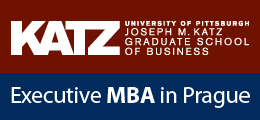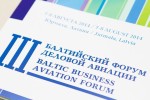Indonesia’s Growing Interest in Rotorcraft Must Be Followed by Appropriate MRO Support
 For some time now Indonesia has been known for having one of the fastest developing civil aviation markets in the world. In the meantime, compared to the airline industry, its rotorcraft segment wasn’t as lucky, growing at yearly average of merely 1% (acc. to Asian Sky Group). However, as Airbus Helicopters Indonesia is setting out plans to boost sales in the archipelago and AgustaWestland recently announcing a deal with the national search and rescue agency of the Republic of Indonesia, it seems that developments in the segment are finally taking a turn for the better. While this is definitely a positive sign, as the country’s rotorcraft fleet is starting to grow, so should its maintenance capabilities.
For some time now Indonesia has been known for having one of the fastest developing civil aviation markets in the world. In the meantime, compared to the airline industry, its rotorcraft segment wasn’t as lucky, growing at yearly average of merely 1% (acc. to Asian Sky Group). However, as Airbus Helicopters Indonesia is setting out plans to boost sales in the archipelago and AgustaWestland recently announcing a deal with the national search and rescue agency of the Republic of Indonesia, it seems that developments in the segment are finally taking a turn for the better. While this is definitely a positive sign, as the country’s rotorcraft fleet is starting to grow, so should its maintenance capabilities.
Indonesia is a country with an urgent requirement for helicopters in virtually every recognized market sectors. Despite this, a limited number of helicopter pilots and high luxury tax imposed on helicopters long remained a serious obstacle for developments within the segment. However, as offshore oil and mining operations have been mostly unaffected by the financial crisis and currently enjoy significant growth the necessity of vertical lift support in the area becomes more and more apparent. In addition, wealthy Indonesians are also starting to acknowledge the convenience of owning a personal helicopter, particularly in Jakarta.
Considering the aforementioned, it is not surprising that the country’s rotorcraft market has recently started to show signs of growth. It is already represented by most international industry players, such as Sikorsky, Airbus Helicopters, AgustaWestland and Bell. Moreover, Indonesia was named among the key Asian-Pacific markets for Russian Helicopters, with more than 10 machines delivered to this country over 2010-2013 alone. Among others, two multi-role Mil Mi-171s were delivered to Airfast Indonesia, while the Indonesian Air Force also operates Mil Mi-17V-5 military transport helicopters and Mil Mi-35P multi-role attack helicopters.
“Helicopter operations in Indonesia are currently largely driven by its resources-based industries mainly involved in coal and tin mining, agriculture, and offshore oil and gas fields. The challenge, however, is to finally start bringing an understanding of fleet management to these industry sectors, as at the moment the operations are scattered and mostly reliant on individual aircraft, rather than embracing internationally recognized management techniques. At the same time, as the number of operated rotorcraft in the country grows, instilling a culture of safety is also a critical factor,” shares Anatolij Legenzov, the CEO of Helisota.
As the helicopter fleet in the Asia-Pacific region has substantially increased in recent years, manufacturers have boosted their support in the region through their own facilities, joint ventures and authorized service centres. Nevertheless, according to GMF AeroAsia, currently Indonesian MRO companies absorb only 30% of the country’s maintenance work. Another aspect to keep in mind is the corresponding demand for qualified technicians. In fact, the country’s Vice-Minister for Transport announced plans to double the country’s MRO capabilities over the next five years to absorb up to 60% of local aircraft maintenance work. To do this, however, Indonesia will need to attract an additional 2 000 of technicians and engineers.
“As the demand for local rotorcraft MRO capabilities grows, finding reliable partners, who can provide not only the necessary services, but also share valuable experience, is a major factor in successful integration of helicopter operations in the country’s sociological and economical life,” comments Anatolij Legenzov, the CEO of Helisota. “Needless to say, simultaneous investment in the development of MRO procedures and professional training should certainly remain the issue under strict supervision. In order to manage the upcoming growth and ensure maximum air safety, the region will definitely require all the possible support it can get.”
Source: Helisota
Share the post "Indonesia’s Growing Interest in Rotorcraft Must Be Followed by Appropriate MRO Support"
Publishing or copying the content of AVIATION Times without a written electronic permission is strictly forbidden. If you have any information, tips, videos, photos or your press releases for us contact us at news@aviation-times.aero.
AVIATION TIMES © Copyright 2012 - 2025







